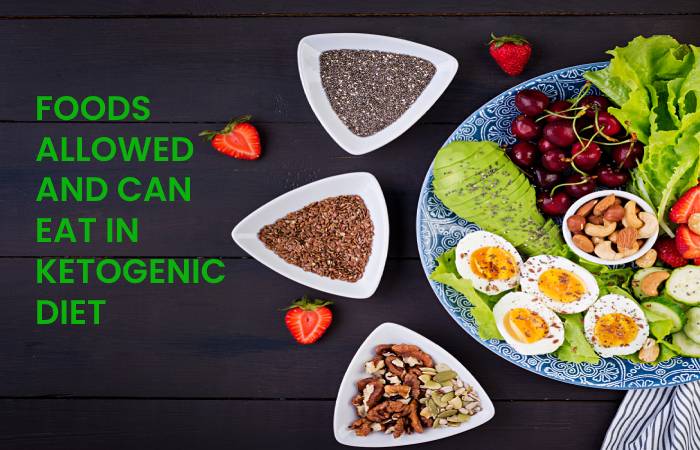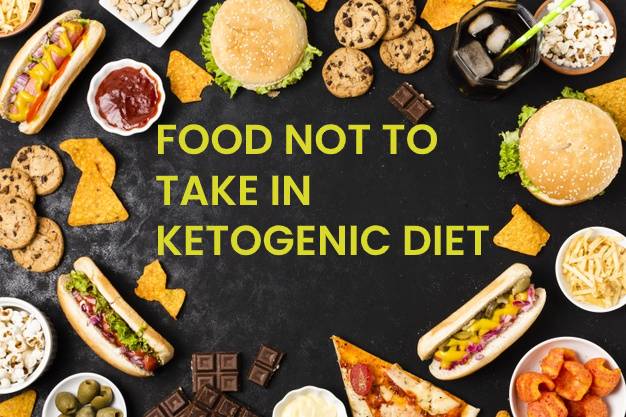When we change our eating style to follow the keto diet, we can find different types of keto diet and variations. Depending on the objective we want to achieve or the kind of food, it will be easier for us to adapt to one or the other variant.
Table of Contents.
What is the Ketogenic Diet?
Being a low carbohydrate diet is known as a ketogenic diet, in which the body produces ketones in the liver, will use energy, and supplies this energy to the brain.
When we eat carbohydrates, our body produces glucose and insulin. Glucose is the molecule that our body uses when it needs energy, above other molecules. So, This process produces Insulin glucose in the bloodstream.
Since our body takes glucose as its primary energy, fats accumulate in case they are needed another time (when there is no glucose).
The body Generally uses glucose as the primary form of energy in a standard diet. But if carbohydrate intake reduces, the body will become a ketosis state.
It is a natural process that the body initiates to help us survive when food intake is low. During this state, we produce ketones, which creates from the breakdown of fats in the liver.
Our body will enter into a better metabolic state by the force of the keto diet. Our body is incredibly adaptable to what you have. When we remove carbohydrates from the menu, he will start burning ketones as the primary energy source.
The Types of the Keto Diet are below.

Strict keto diet
It is used primarily at the beginning when you want to lose weight fast. We would lower the percentage of daily carbohydrates to approximately 5%. All processed products must eliminate, all the food we eat must be natural and prepared by ourselves. It also recommends keeping track of the daily calories
A strict ketogenic diet (SKD): It contains Moderate-protein 20% protein and a high-fat diet. It typically contains 75% fat and only 5% very low carbohydrates.
Lazy keto diet
Despite the name, it could say that it is the most common and the one we will do when we have been in ketosis for a while. You would only have to calculate the percentage of carbohydrates and always keep them below 10%. Raise your fat intake and not worry too much about calories. It would be the ideal state when you have been on the keto diet for a while when it says that you are keto evolved, and your body has become accustomed to working with stored fat. You have been calculating calories and macronutrients, and you can do it by eye.
The lazy ketogenic diet (CKD): This diet involves periods of more percentage of carb refeeds, such as Four ketogenic days followed by three long- carbohydrates days.
Dirty keto diet
I do not recommend this formula, but I understand that for very busy people or without time to cook it can be a good option. Although it should only be temporary, it consists of neglecting the quality of food and focusing only on the percentages of macronutrients. Going to fast-food restaurants and removing the bread from the hamburger. This type would only be in case of specific need, and I repeat, it not recommends.
Carnivorous ketogenic diet (zero carb)
It is a current of the diet in which only foods of animal origin eating and all vegetables and eliminating fruits. Those who do it tend to have an absolute intolerance to most vegetables and fruits. It would be necessary to eliminate carbohydrates from our intake, keeping fat at a minimum of 70%, the rest would come from protein. I do not recommend it, it is very restrictive, and it is possible would be a deficit of micronutrients and vitamins over time.
Carnivorous ketogenic diet: This is similar to a standard ketogenic diet, but includes more protein. It will be in the ratio is often 65% fat, 30% protein, and 5% carbs.
Vegetarian ketogenic diet
Vegetarian Ketogenic diet Yes, definitely, although it is not easy. Protein and fat should remove from eggs, cheese, Greek yogurt, and nuts and seeds. May include tofu or tempeh. Vegetables should be too low in carbohydrates to get enough of it. It is necessary to take abundant healthy fats, coconut oil, butter, and extra virgin olive oil to reach the macronutrient percentages.
As you can see, it is possible, although very restrictive. With little variety, it is one of the most complicated types of ketogenic diet to follow. Over time, nutritional supplements may have to take.
The vegetarian ketogenic diet (VKD): This carbohydrate allows you to add carbs around workouts.
FOODS ALLOWED AND CAN EAT IN KETOGENIC DIET
 This list is a basic summary of what to eat on the keto diet. For a longer description, you can see our article on Ketogenic Diet Foods
This list is a basic summary of what to eat on the keto diet. For a longer description, you can see our article on Ketogenic Diet Foods
The Healthiest Sources of Fat are:
- Butter (better clarified or ghee ) and cream
- Unprocessed cheese blue and can be mozzarella, cheddar, goat, cream
- Avocado
- Olive oil (virgin and raw), and also coconut oil and avocado oil
- Nuts and seeds previously soaked like Almonds, walnuts, flax seeds, pumpkin seeds, chia seeds, etc.
You can consume vegetables with low carbohydrate content, especially leaves, and sprouts (2 g carbohydrates / 100 grams, especially in the form of fiber):
- Spinach
- Lettuce
- Endives
- Broccoli
- Cabbage
- Pastured or omega-3 whole Eggs
- Most green veggies, tomatoes, onions, peppers, etc
There are also fruits (up to 2.7 g carbohydrates / 100 grams in the form of sugars)
- Cucumber
- Zucchini
- Cauliflower
- Celery
- Garlic
- Avocados of freshly made guacamole.
- Spices
- And, various healthy herbs, including salt paper.
At the protein level, the intake of foods that are also recommending rich in healthy fats (Omega 3):
- Fatty fish Such as salmon, Sardines, and bluefish in general tuna and mackerel Salmon
- Organic meat which is Red meat, steak, ham, sausage, bacon, chicken and turkey
Although you can also eat without abusing another type of quality protein (rabbit, guinea pig, white fish.) I particularly recommend three foods that will be your allies during the diet.
FOOD NOT TO TAKE IN KETOGENIC DIET

In the ketogenic diet, you should limit the consumption of the following foods, which are precisely those rich in carbohydrates:
- Bread, pasta, flour, and rice Limit your intake of processed vegetable oils, mayonnaise, etc
- Cereals: Those that contain more carbohydrates are puffed wheat, muesli, wheat bran, rice flakes, wheat and barley, Corn Flakes, and oat flakes.
- Vegetables having roots and tubers: Potatoes, sweet potatoes, carrots, parsnips, etc.
- Legumes(lentils, chickpeas, beans, peas, beans, beans, beans)
- Sweets and cakes, pastries.
- Soda, sugary drinks and fruit juice, smoothies, cake, ice cream, candy, etc
- Processed foods and prepared meals(often with high levels of unhealthy fats and carbohydrates)
- Avoid Alcohol, and many alcoholic beverages can throw you out of ketosis due to their card content.
- Sugar-free diet foods are highly processed foods that can affect ketone levels in some cases.
The Fruits are not allowed in the keto diet
Although fruits are often considered a healthy diet, they are very high in carbohydrates and sugar, unlike non-starchy vegetables. Therefore, when it comes to ketogenic diets, most fruits should be avoided.
However, individual berries are an exception that can enjoy in small quantities. The best options are blackberries, raspberries, and strawberries, which provide 5-6 grams of carbohydrates for every 100 grams (3½ ounces).
Most other fruits (including blueberries) contain double or triple this amount of carbohydrates. Keep in mind that berries do not provide any nutrients that cannot find in vegetables and other lower carbohydrate foods, so they are optional on a keto diet. If you’re very insulin resistant, you better not eat them.


